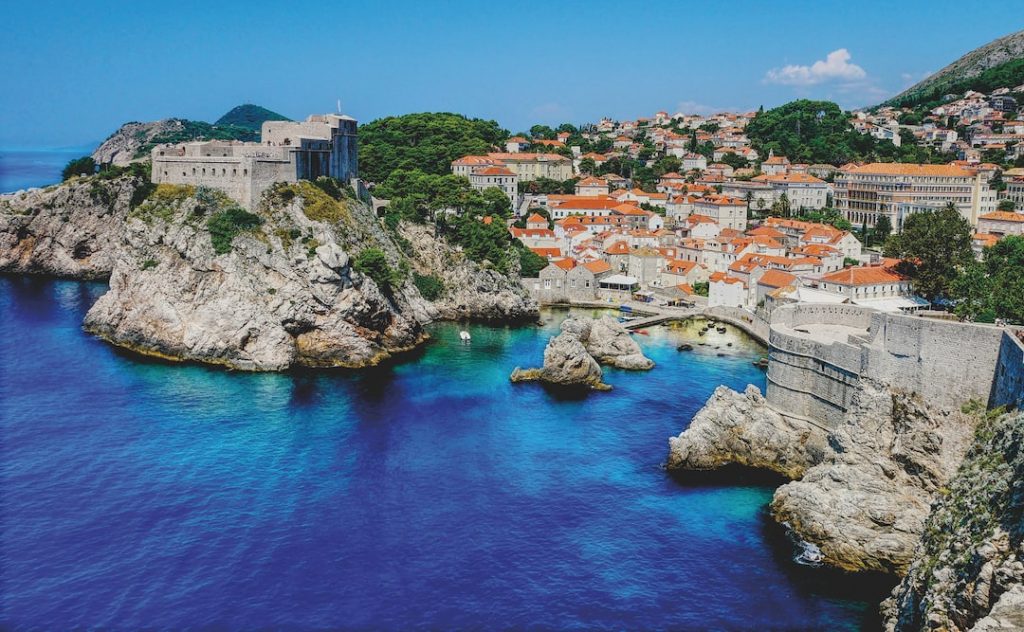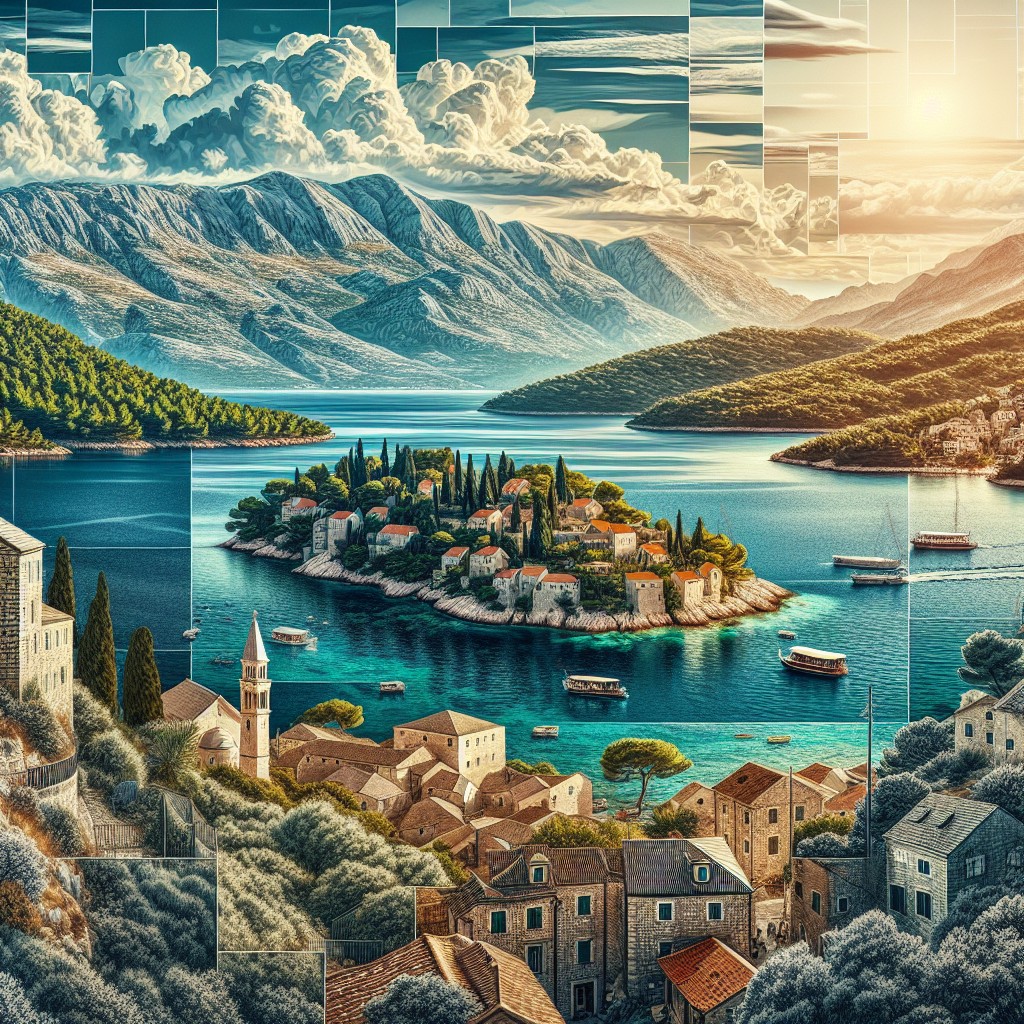Croatia, located in Southeast Europe, is a country known for its stunning natural beauty. From its crystal-clear waters along the Adriatic coast to its lush forests and diverse wildlife, Croatia is blessed with a wide range of natural resources. These resources play a crucial role in the country’s economy, providing opportunities for tourism, agriculture, and energy production. However, they also face threats from human activities and climate change. In this article, we will explore Croatia’s natural resources in detail, their importance to the country, and the efforts being made to protect and conserve them.
Summary
- Croatia has a diverse range of natural resources, including minerals, forests, water, agriculture, and renewable energy potential.
- The country is rich in mineral resources, including bauxite, coal, and oil, but these industries have declined in recent years.
- Croatia’s forests cover over 2 million hectares and are an important source of timber and biodiversity.
- The country has abundant water resources, including rivers, lakes, and groundwater, which are used for drinking, irrigation, and hydropower.
- Agriculture is a significant sector in Croatia, with fertile land and a variety of crops, including grapes, olives, and lavender.
- Croatia has potential for renewable energy, particularly in wind and solar power, but development has been slow due to regulatory and financial barriers.
- Natural resources play an important role in Croatia’s economy, contributing to industries such as tourism, manufacturing, and energy.
- Threats to Croatia’s natural resources include pollution, climate change, and unsustainable practices such as overfishing and deforestation.
- Conservation efforts are underway to protect Croatia’s natural resources, including national parks, protected areas, and sustainable management practices.
- The future prospects for Croatia’s natural resources depend on sustainable development practices, investment in renewable energy, and effective conservation efforts.
Overview of Croatia’s Natural Resources
Croatia’s geographical location and climate contribute to its rich natural resources. Situated at the crossroads of Central Europe and the Mediterranean, Croatia enjoys a diverse climate ranging from continental in the interior to Mediterranean along the coast. This variation in climate supports a wide range of ecosystems and biodiversity.
The country is home to several national parks and nature reserves, including Plitvice Lakes National Park and Krka National Park, which showcase Croatia’s stunning landscapes and unique flora and fauna. These protected areas are not only important for conservation but also attract tourists from around the world, contributing to the country’s economy.
Mineral Resources Found in Croatia
Croatia is rich in mineral resources, with deposits of oil, natural gas, coal, bauxite, and various metals. The exploration and extraction of these minerals play a significant role in Croatia’s economy. Oil and gas reserves are found offshore in the Adriatic Sea, while coal deposits are located in the northern part of the country.
Bauxite, an important raw material for aluminum production, is found in central Croatia. The mining industry contributes to job creation and export earnings for the country. However, it also poses environmental challenges such as land degradation and pollution. Sustainable mining practices and environmental regulations are necessary to mitigate these impacts.
Croatia’s Rich Forest Resources
Forests cover approximately 44% of Croatia’s land area, making them a vital natural resource. The country is home to various types of forests, including beech, oak, pine, and fir. These forests provide timber for the construction industry, as well as wood for fuel and other products.
In addition to their economic value, forests play a crucial role in maintaining the ecological balance. They act as carbon sinks, absorbing carbon dioxide from the atmosphere and mitigating climate change. Forests also provide habitats for numerous plant and animal species, contributing to biodiversity conservation.
The Abundance of Water Resources in Croatia
Croatia is blessed with abundant water resources, including rivers, lakes, and groundwater. The country is crisscrossed by several major rivers, such as the Danube, Sava, and Drava. These rivers not only provide freshwater for irrigation and drinking purposes but also support various economic activities such as fishing and hydropower generation.
Croatia’s lakes, including the famous Plitvice Lakes and Lake Vrana, are not only scenic attractions but also important ecosystems. They provide habitats for numerous species of fish and birds and contribute to the overall biodiversity of the country.
Groundwater is another valuable water resource in Croatia. It is used for drinking water supply and irrigation purposes. However, overexploitation of groundwater can lead to depletion and contamination, posing a threat to both human health and the environment.
Agricultural Resources of Croatia
Agriculture is an essential sector of Croatia’s economy, contributing to food security and rural development. The country has a diverse range of agricultural resources, including fertile soils and favorable climatic conditions.
Croatia produces a variety of crops, including cereals (such as wheat and corn), fruits (such as apples and grapes), vegetables (such as tomatoes and peppers), and olives. The agricultural sector also includes livestock farming, with cattle, pigs, and poultry being the main livestock species.
The agricultural sector faces challenges such as climate change, land degradation, and water scarcity. Sustainable farming practices, including organic farming and efficient irrigation techniques, are being promoted to address these challenges and ensure the long-term viability of agriculture in Croatia.
Croatia’s Potential for Renewable Energy
Croatia has significant potential for renewable energy production, particularly in the areas of wind, solar, and hydropower. The country’s long coastline and favorable wind conditions make it suitable for wind energy generation. Solar energy potential is also high due to the country’s abundant sunshine.
Hydropower is another important renewable energy source in Croatia. The country has numerous rivers and waterfalls that can be harnessed for electricity generation. Hydropower plants already contribute a significant portion of Croatia’s electricity production.
Investments in renewable energy projects not only reduce dependence on fossil fuels but also create job opportunities and contribute to economic growth. The government of Croatia has set targets for increasing the share of renewable energy in the country’s energy mix, signaling its commitment to sustainable development.
The Role of Natural Resources in Croatia’s Economy
Natural resources play a significant role in Croatia’s economy, contributing to its GDP and exports. The mining sector, including oil and gas extraction and mineral mining, generates revenue and employment opportunities. The forestry sector provides timber for construction and wood products industries.
Water resources support various economic activities such as agriculture, fishing, and hydropower generation. The tourism industry, which relies heavily on Croatia’s natural beauty, contributes significantly to the country’s economy. Tourists are attracted to the pristine beaches along the Adriatic coast, national parks, and cultural heritage sites.
Threats to Croatia’s Natural Resources
Despite their importance, Croatia’s natural resources face several threats from human activities and climate change. Deforestation for agriculture and urbanization poses a threat to the country’s forests. Unsustainable mining practices can lead to land degradation and pollution.
Water resources are at risk from overexploitation, pollution from agricultural and industrial activities, and climate change-induced droughts. Climate change also poses a threat to Croatia’s natural resources, with rising temperatures and changing precipitation patterns affecting ecosystems and biodiversity.
Conservation Efforts to Protect Croatia’s Natural Resources
To protect and conserve Croatia’s natural resources, various laws and regulations have been put in place. The country has established a network of national parks, nature parks, and protected areas to safeguard its biodiversity and ecosystems. These protected areas are managed by government agencies and NGOs, which work towards conservation and sustainable use of natural resources.
The government of Croatia has also implemented environmental regulations to ensure sustainable mining practices and reduce the impact of mining activities on the environment. Efforts are being made to promote sustainable forestry practices, including reforestation and responsible timber harvesting.
NGOs and environmental organizations in Croatia play a crucial role in raising awareness about the importance of natural resource conservation. They engage in activities such as environmental education, advocacy, and community-based conservation initiatives.
Future Prospects for Croatia’s Natural Resources
Croatia has significant opportunities for the sustainable development of its natural resources. The country can further promote renewable energy production, reducing dependence on fossil fuels and contributing to climate change mitigation. Investments in renewable energy projects can create jobs and stimulate economic growth.
Sustainable agriculture practices can ensure food security while minimizing the environmental impact of farming activities. The promotion of organic farming, efficient irrigation techniques, and agroforestry can contribute to the long-term viability of agriculture in Croatia.
Challenges such as climate change, land degradation, and water scarcity need to be addressed through integrated approaches that involve stakeholders from various sectors. Collaboration between government agencies, NGOs, local communities, and businesses is essential for the effective management and conservation of Croatia’s natural resources.
Croatia’s natural resources, including its mineral deposits, forests, water resources, and agricultural lands, are vital for the country’s economy and environment. They provide opportunities for tourism, energy production, and agriculture. However, these resources face threats from human activities and climate change.
Efforts are being made to protect and conserve Croatia’s natural resources through laws and regulations, conservation initiatives, and sustainable practices. The future prospects for Croatia’s natural resources lie in the sustainable development of renewable energy, agriculture, and responsible mining practices.
It is crucial for all stakeholders to recognize the importance of preserving Croatia’s natural resources and take action to ensure their long-term sustainability. By protecting and conserving these resources, we can ensure a prosperous future for Croatia and its future generations.
FAQs
What are the natural resources of Croatia?
Croatia has a variety of natural resources including oil, natural gas, coal, bauxite, timber, arable land, and fertile soil.
Where is oil found in Croatia?
Oil is primarily found in the northern part of Croatia, specifically in the Drava and Sava river basins.
What about natural gas?
Natural gas is found in the northern and eastern parts of Croatia, particularly in the Sava and Drava river basins.
Where is coal located in Croatia?
Coal is found in the central and eastern parts of Croatia, specifically in the Sava and Drava river basins.
What is bauxite and where is it found in Croatia?
Bauxite is a mineral used to produce aluminum. It is found in the central and western parts of Croatia, specifically in the Dalmatian Alps and the Istrian Peninsula.
What types of timber are found in Croatia?
Croatia has a variety of timber including oak, beech, pine, and fir. The forests are primarily located in the central and eastern parts of the country.
Where is the arable land located in Croatia?
Arable land is found throughout Croatia, but the most fertile areas are in the Pannonian Basin in the north and the Dalmatian coast in the south.
What is the quality of Croatia’s fertile soil?
Croatia’s fertile soil is of high quality and is suitable for growing a variety of crops including wheat, corn, and vegetables.


